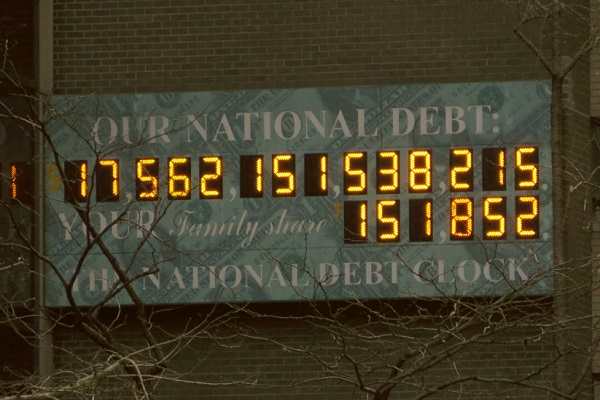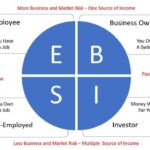The Federal Debt as of Jan 2021 is nearing $28 trillion with another $1,9 trillion stimulus bill being considered. When I wrote this post initially in 2015 the federal debt was about to cross $18 trillion. What does a nearly $30 trillion debt have to do with me? It is not my debt. Someone else will pay it. Even if I owe a share, there are over three hundred and thirty million people in America and my share is not too much, right?
That is how most people think about the fiscal debt problem. As an abstract concept, it is hard to grasp unless you have the curiosity to do a little more research.
In an effort to calculate the real impact of the national debt, let’s take the total national debt ($30T) figure and divide it by the number of US households (128M). After doing this calculation, the result is each taxpayer owes $234,000. Now imagine having $234,000 in credit card debt and nothing to show for it. If that balance was a 30-year mortgage with just a 2% interest rate that would mean an additional payment of about $10.3k per year. Oh, and by the way, you have to continue to pay interest on the outstanding balance, or the unpaid interest gets tacked onto the principal. Now you can begin to see the extent of the problem.
With the debt per taxpayer as high as it is, the government will have no other option except to raise taxes on middle and high-income earners (tax the rich) at some point in the near future. It may be framed under a pretense of patriotism (“to do your part”), but it will be just another excuse to extract money from the private sector to pay for a bloated government.
Taxes may not be restricted to just income taxes, but may come from higher sales taxes; additional excise taxes commonly applied to specific products like cigarettes and gas; and higher inheritance or ownership transfer taxes. They may even come in even more obscure ways like imposing tariffs or duties on imports which makes products more expensive for the consumer while generating revenue for the government.
Higher taxes, in whatever form, will make it difficult for citizens to preserve their standard of living. As the private sector wealth shrinks, economic activity will slow, resulting in fewer new small businesses and smaller wage increases for employees. Therefore, these individuals will be squeezed from both ends (taxes and wages). This is one of the key reasons why the middle class (which is defined as households earning between $40,500 and $122,000) is shrinking.
While it may be difficult to avoid many taxes, exposure to income taxes can be reduced. How do you inoculate yourself today to reduce your exposure to the inevitable storm that is coming? One way is to become a small business owner.
As a small business owner, you have business expenses that allow you to pay for things with pretax dollars. For example, let’s look at how much a $100 a month cell phone for business really costs when you use pre-tax dollars vs. when you don’t.
If you use pre-tax dollars, the business cell phone really only costs $100 per month. However, if you use post-tax dollars, you have to figure in how much tax you need to pay in addition to the $100. If your total accumulated federal and state income tax rate is 35%, then you have to earn $154 of pre-tax income to net $100 after taxes, making the cell phone’s real cost $154 per month.
Additionally, while the marginal income tax rate may go up, earning more income will help to sustain your standard of living. According to the 2010 census, the median net worth at retirement for employees is just below $300,000. By contrast, the median net worth of someone that is self-employed is $1,700,000.
We are all on the deck of the Titanic. Most of the passengers are continuing to sing and dance, ignoring the signs that the ship is sinking.
Are you part of the masses living in denial until it is too late or are you making plans to survive?












